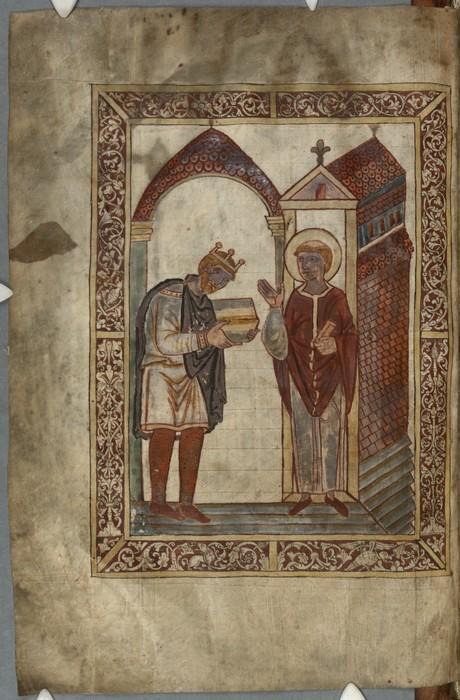This blog serves at my art history outlet. I mainly focus on Medieval. Most images sourced externally. Going on 16 years of art history nerdiness 🤓
Don't wanna be here? Send us removal request.
Text






Knowth Burial Mounds
Newgrange, Ireland
Neolithic passage burial mounds from 3000-2500BCE
June 2025
21 notes
·
View notes
Text

The Belles Heures of Jean de France, duc de Berry, Folio 221r, detail, Mass for All Souls, The Limbourg Brothers, 1405-08/09
From the Met Museum
75 notes
·
View notes
Text
If you’re on Bluesky, share your handle and let’s connect!

I’ve abandoned Twitter/X and am giving Bluesky a try. Unlike this blog, it’s a cacophony of all my interests and musings. Art History is definitely a topic I’ll ramble about but also fungi, music, books, tech and marketing
22 notes
·
View notes
Text

I’ve abandoned Twitter/X and am giving Bluesky a try. Unlike this blog, it’s a cacophony of all my interests and musings. Art History is definitely a topic I’ll ramble about but also fungi, music, books, tech and marketing
22 notes
·
View notes
Text




Frog amulet/seal, Egypt, Late Period, 1069-664 BC
from The Louvre
4K notes
·
View notes
Text

How many insects can you spot?
Insects are the masters of camouflage and mimicry! Insects that are are camouflaged blend in with their environments through colors, patterns, and shapes. Mimicry is an evolutionary adaptation where insects resemble another species or a natural object.
There are 27 insects in this illustration showcasing the wonders of camouflage and mimicry. If you are curious as to where all the little wild things are, view this key from the text in Biodiversity Heritage Library for the answers!
SciArt by H. Morin for The Royal Natural History, Vol. 6 (1896), edited by Richard Lydekker.
257 notes
·
View notes
Text

Gold, turqouise, and lapis lazuli Ba amulet, Ptolemaic Egypt, 305-30 BC
from The Brooklyn Museum
1K notes
·
View notes
Photo

The September Massacres refers to a series of mass killings that took place in the prisons of Paris between 2 and 7 September 1792, during the French Revolution (1789-99). Sometimes known as the first Terror, the massacres saw between 1,100 and 1,400 prisoners murdered by gangs of sans-culottes, driven by a fear that the prisoners would rebel and destroy Paris.
French military failures in the opening months of the War of the First Coalition (1792-97) had left the path to Paris open to a Prussian army, which promised the city’s complete destruction. Panicking, mobs of Parisians rushed to the city’s prisons, where royalists and refractory priests were being held on questionable counter-revolutionary charges. Taking justice upon themselves, the mobs set up mock tribunals in which they passed sentences on the ‘traitors’ and executed many on the spot. The September Massacres are significant for ushering in a new phase of the Revolution, one in which terror and violence were considered legitimate political tools. This, of course, would lead directly to the bloodletting of the Reign of Terror, which began about a year later.
69 notes
·
View notes
Text

The Bathing Pool by Hubert Robert, 1777-1780.
4K notes
·
View notes
Text

Portrait of King Æthelstan presenting a book to St Cuthbert, by permission of the Master and Fellows of Corpus Christi College, Cambridge: Cambridge, Corpus Christi College, MS 183, f. 1v
150 notes
·
View notes
Text

Jan van Eyck - The Birth of John the Baptist. 1420 - 1430
769 notes
·
View notes
Text
I’ve been trying to post this video for 3 days now….
69 notes
·
View notes
Text
My incredible charity shop find this morning…
Wadsworth Longfellow poetry book from 1855 🤯🤯
AND FOR £1
23 notes
·
View notes



